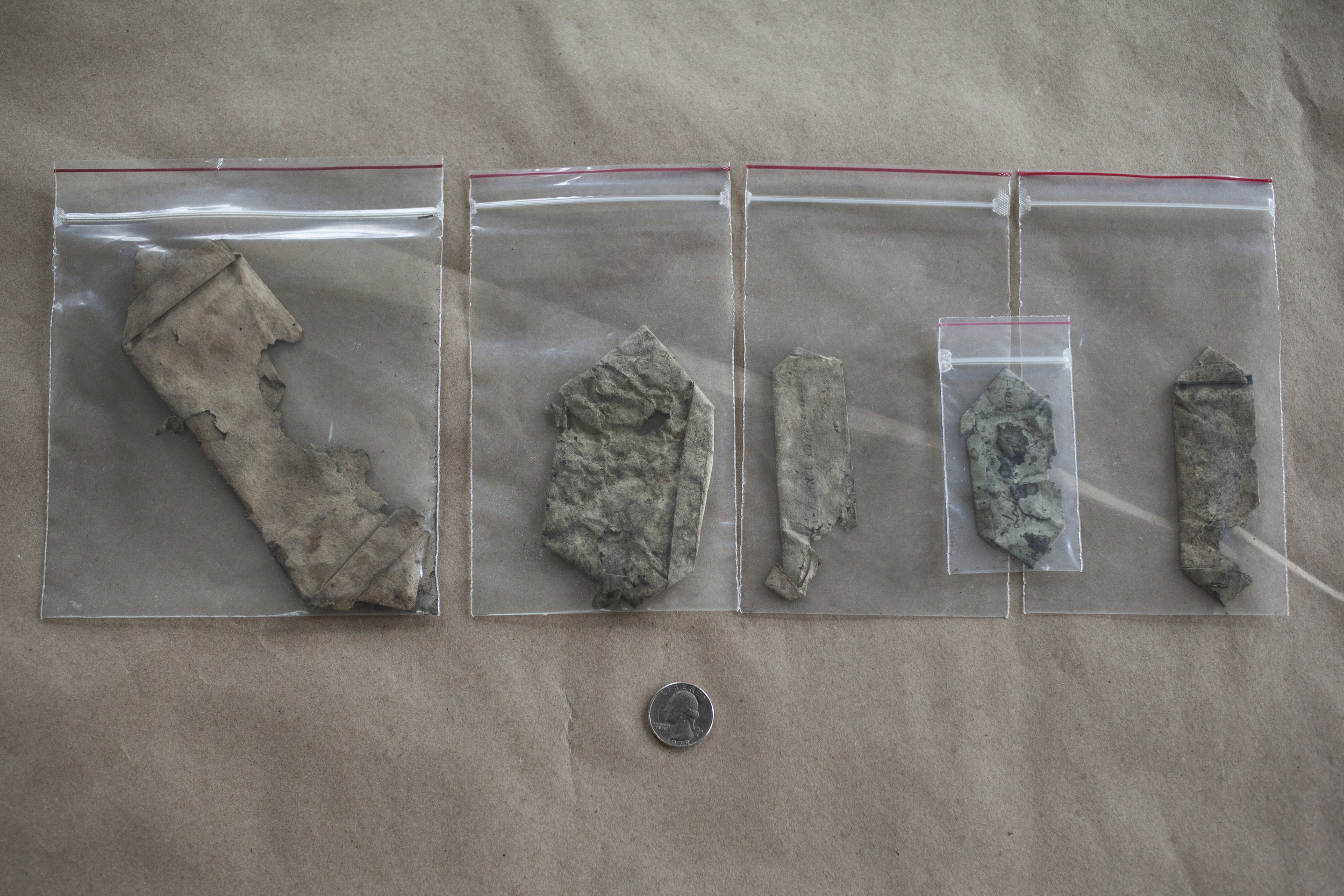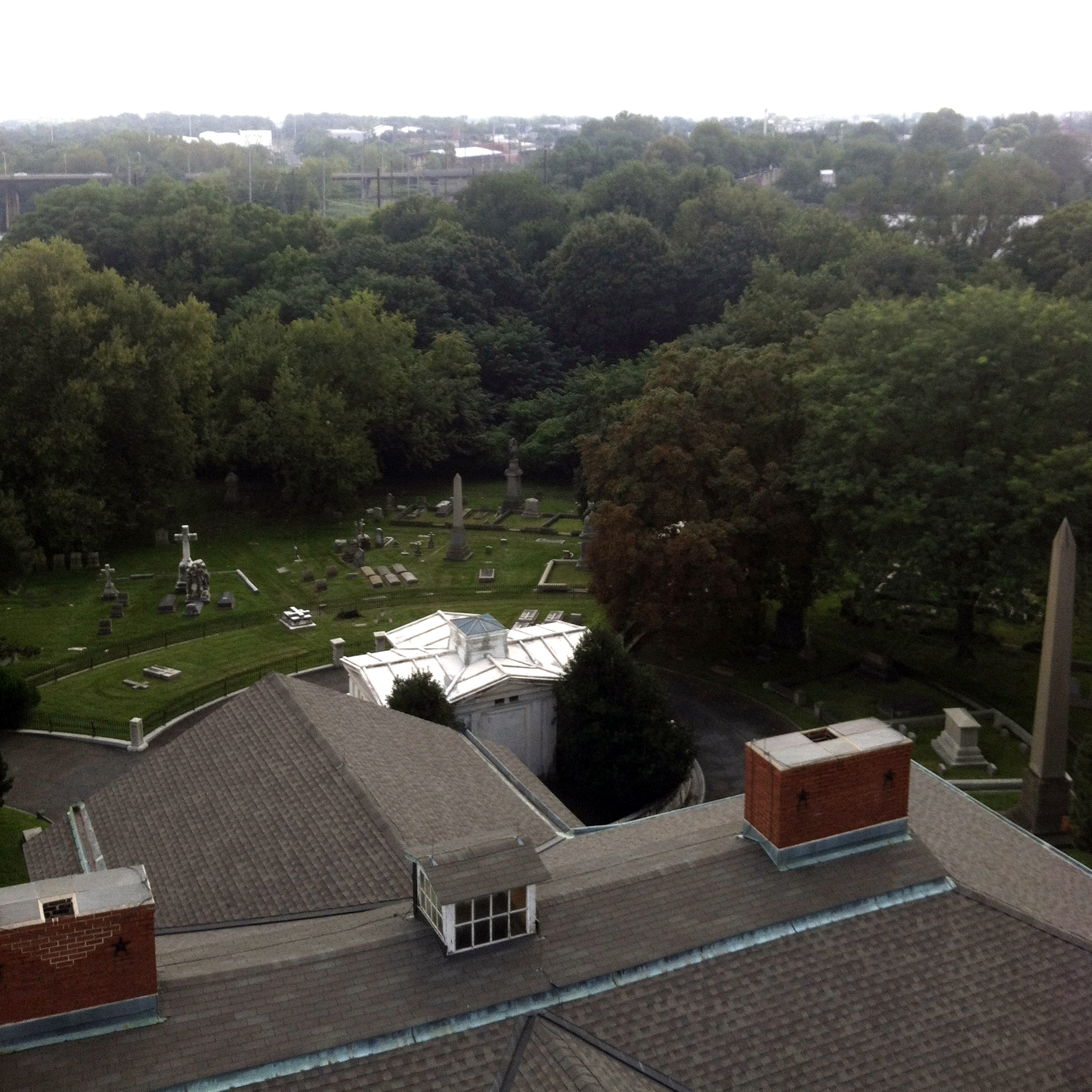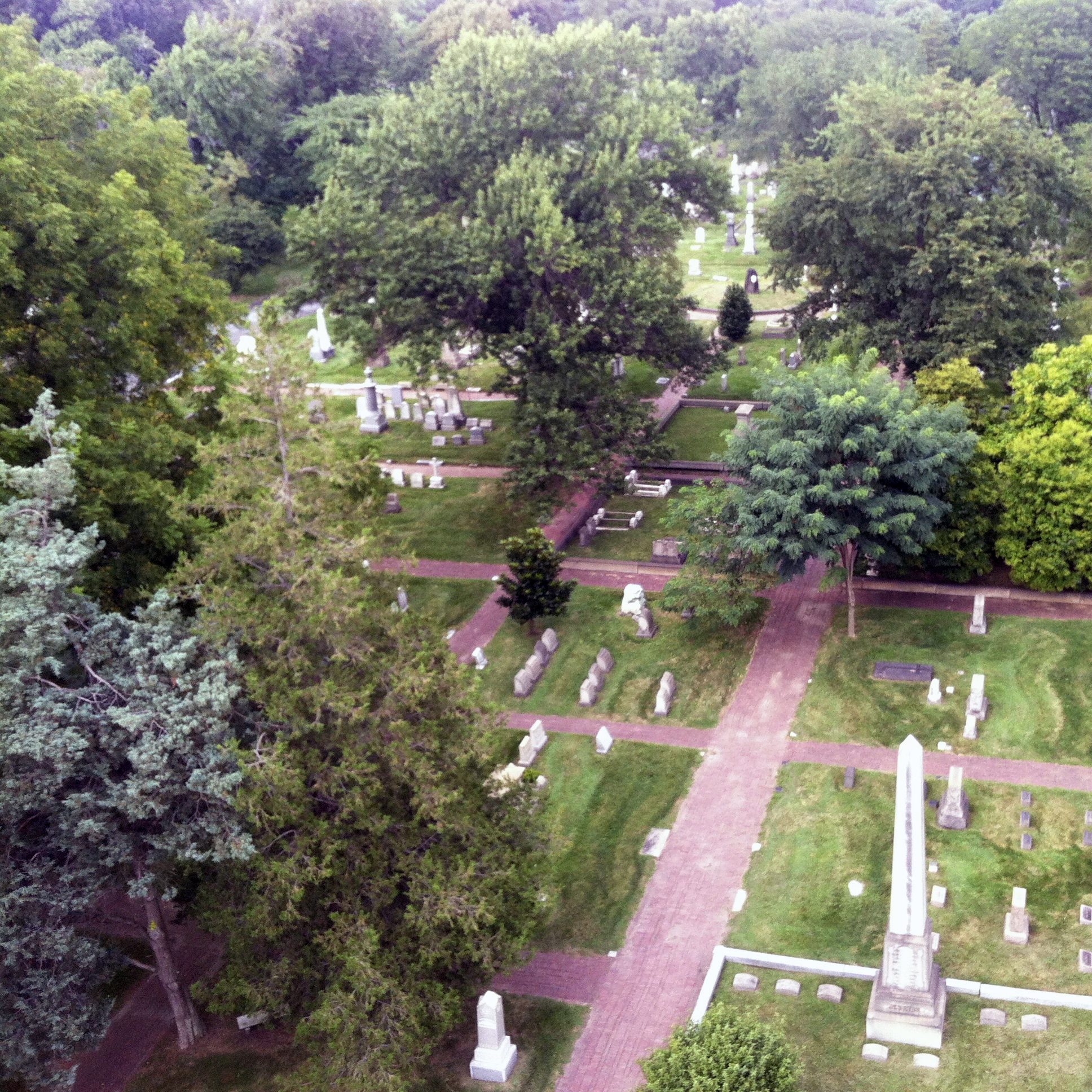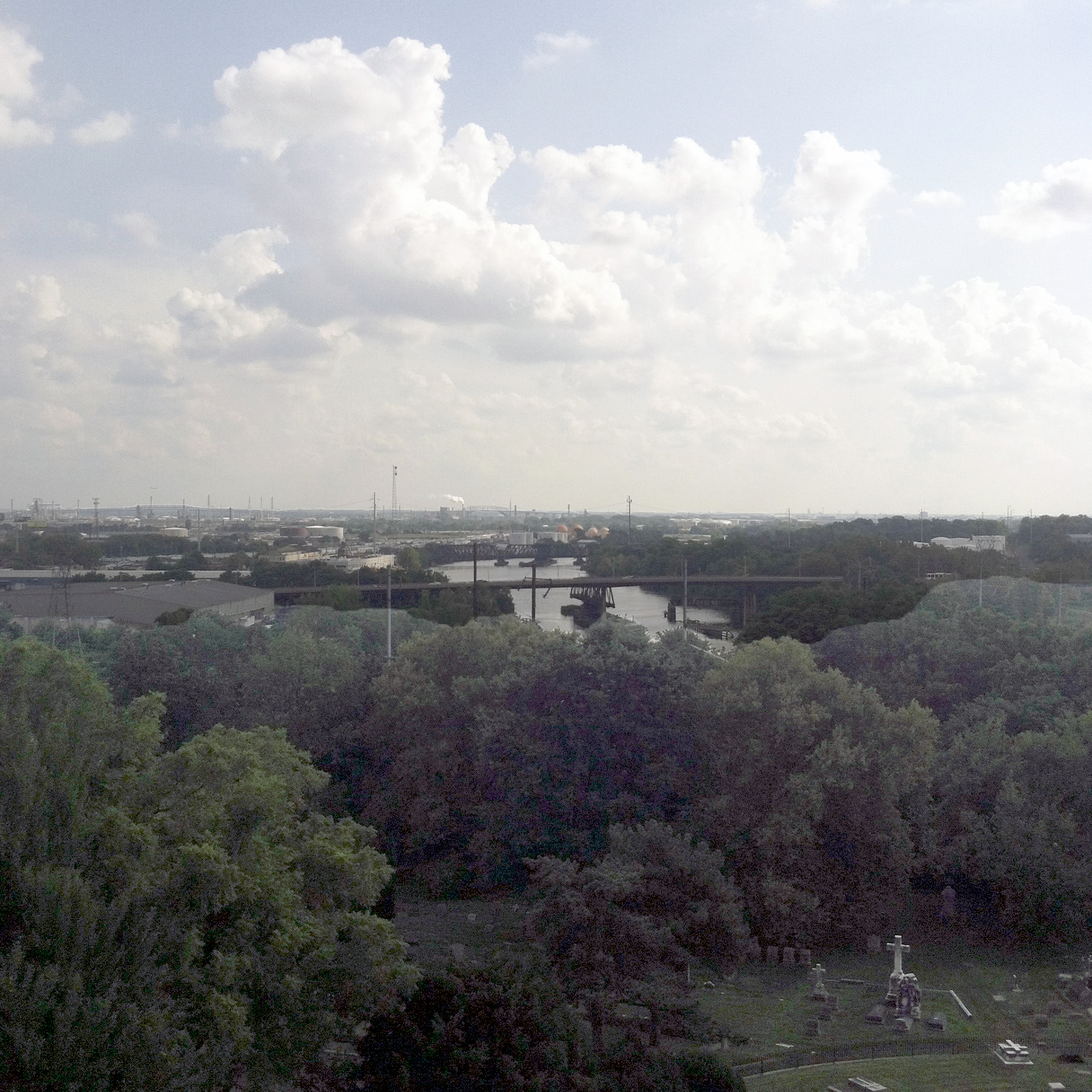Did you know that William Hamilton of The Woodlands and William Bartram of Bartram's Garden were contemporaries and friends? The two shared a love of plant collecting and botany, were neighbors, and were involved in many of the same local institutions! To highlight some of these lesser-known connections, we're bringing you Two Williams: a six month blog series hosted between The Woodlands and Bartram's Garden. Each month, we will dig into the archives and share what we find!
The attic, or garret, of The Woodlands Mansion. Photo: Starr Herr-Cardillo
Uncommon for someone of his wealth and status, William Hamilton of The Woodlands left relatively little evidence of his life behind. Unlike William Bartram, who devotedly documented his work (in elegant prose, no less!) much of what we know about Hamilton’s plant collection and the design of his estate is through a small selection of personal letters and visitor accounts. With no direct heirs, most of Hamilton’s personal effects, art, and furniture collection were gradually dispersed with the estate. Today, the few known collections of personal letters and accounts are located in various repositories and archives around Philadelphia. Though this means that researching Hamilton can be a challenge, it also makes new discoveries more exciting because you never know where or when you might find them. Thanks to a hungry group of rodents and a meticulous historian, an unexpected discovery was made in the attic of The Woodlands that revealed quite a bit about Hamilton’s plant collection.
In the early 1990’s, as architectural historian Tim Long poked around some of the unfinished sections of the attic while examining the framing structure of The Woodlands mansion, he noticed small terra cotta fragments strewn throughout, which he as able to identify as bits of small, hand-thrown starter pots used to sprout seeds. With a more discerning eye, he reexamined the floor and began to make out the edges of dozens of rectangular pieces of paper, caked beneath a thick layer of dust, resting between the floor joists. After carefully gathering some samples, Long identified the flimsy objects as historic seed packets, based on similar ones he had seen on display years earlier at Bartram’s Garden. These once ubiquitous, hand-folded packets were generally 6-sided and distinguished by a self-locking folding technique, which produces triangular ends. Long collected the packets and they were eventually placed on loan in the botany department of The Academy of Natural Sciences for safekeeping and to allow for further study.
The seed packets were discovered between joists in the attic floor. Photo: Starr Herr-Cardillo
The folded packets were created from a variety of papers in a variety of sizes, and were carefully inscribed in cursive with Linnaean binomials. Some packets also included botanical authorities, along with dates or personalized notes related to their contents. As Bartram’s Garden Curator Joel Fry, who analyzed and catalogued all 250+ examples says, this was a “rodent-selected sample,” which probably means that hungry critters were pulling packets with edible or tasty seeds from a box or boxes left in the attic for storage. Consequently, most of the packets and their contents had been liberally gnawed, making the labels a little more challenging to decipher. In 2007, Fry transcribed and catalogued the collection, translating the historic plant names from the packets into modern scientific binomials, transcribing notes, and where possible identifying the label writers.
The majority of the packets were written by an unidentified writer, which Fry suspects may have been a professional clerk or scribe, due to the stylized nature of the handwriting and apparent skill of the calligraphy. He notes that the handwriting differs from the typical style of writing common in Philadelphia around 1800. Packets inscribed by “the X writer” (so-named by Fry because of the way the writer’s r’s resembled the letter x) may have originated somewhere in Europe, or were at least inscribed by a writer trained there.
William Hamilton labeled a third of the collection himself (87 packets), a detail that Fry believes speaks to his proficiency in botanical science—it would have been rare at that time for people to know the correct scientific names for such a wide variety of plants. As Fry points out: if you were to randomly select people off the street today, how many could come up with the Latin names for any plant, let alone dozens of them? Hamilton even went as far as to supply multiple Latin names on a few of the packets, a detail that Fry says indicates he was privy to contemporary controversies in plant naming conventions. A handful of packets appear to be labeled by different unidentified writers. At least one packet was labeled by neighbor William Bartram. Some of the species represented in the collection were North American native species that the Bartrams first collected and grew, which William Hamilton likely acquired from William Bartram and the Bartram family garden.
Fragments of small, hand-thrown terra cotta pots used for starting seeds were also found. Photo: Starr Herr-Cardillo
The distinctive folding style is particularly visible on this large seed packet. Photo: Starr Herr-Cardillo
The packets were various sizes and made from different types of paper. Photo: Starr Herr-Cardillo
Each has been inscribed, though some are difficult to decipher due to missing fragments from rodent damage. Photo: Starr Herr-Cardillo
The collection of plants represented by the packets consists of a wide-ranging mix of plant species and types. Comprised mostly of relatively small seeds, the collection is skewed towards herbaceous plants — non-woody perennials, biennials, and annuals, but there were also some woody plants represented. Though there are some native plants in the collection, most of the plant species represented are exotics from a variety of provenances around the globe, which were also often denoted on the packets. The majority are considered to be outdoor plants—including edible varieties—and things that wouldn’t be uncommon to find in a kitchen or flower garden, as opposed to temperature-sensitive tropical greenhouse plants.
An expert historian like Fry can also read into some of the more specific details hidden within the collection. He points out that the abundance of hibiscus or mallow family plants (the Linnaean “Monadelphia Class” which included tea, cotton, okra, camellia, and the Bartrams’ Franklinia among others) indicates Hamilton was tuned in to important scientific developments and trends of the time. A prominent Spanish botanist, Antonio José Cavanilles (1745-1804), had been publishing a series of dissertations on this plant group at the end of the 18th century, and the “Monadelphia” were also the subject of significant research in Paris. The Woodlands seed packets include several “economic plants” imported from India, Asia, and Africa that align with the general interest of the time to import useful plants that could drive economic wealth. Both jute and dunchi fiber, which could be used for rope and cordage were found within the collection.
The packets also provide evidence that the plantings at The Woodlands were not without garden flowers, some which we now consider common (e.g. morning glories, marigold, zinnia, larkspur and yarrow); and some medicinal plants (e.g. euphorbia, monks rhubarb, nightshade and jimsonweed). The packets also included a number of garden vegetables, some of which would have been quite uncommon in the U.S. at the time, including seeds from two varieties of guava (which had to have winter shelter in a greenhouse), Thai basil, eggplant, several melons, and multiple varieties of cabbage.
According to Fry, three of the most historically significant plants found within the collection are:
Hydrangea macrophylla, a.k.a. French hydrangea or blue Hortensia, labeled by Hamilton as “Hydrangea mutabilis,” which he described as “a most beautiful flowered Shrub from China.”
Image courtesy of The Academy of Natural Sciences of Drexel University.
Known today as the Hydrangea macrophylla, this plant is a garden favorite. The flowers can be pink or blue depending on the alkalinity of the soils they are grown in. Illustration published by Curtis in London in 1799.
This is the same variety of blue hydrangea that we know and love today, but was then a very rare shrub, sent to the UK from China around 1790, only a few years before Hamilton acquired it. Hamilton was very probably the first to introduce this plant to North America. In a letter written the summer of 1800, William Bartram mentions the new hydrangea in bloom at The Woodlands, describing the “Cœlestial blue of the flowers” as “Inexpressebly pleasing.” Fry notes that Hydrangea was a newly named plant genus that had only recently been discovered in the 18th century. In fact, John Bartram may have been the first to scientifically record a hydrangea in eastern North America when he discovered Hydrangea arborescens, the American wild hydrangea.
Hydrangea quercifolia, a.k.a. oakleaf hydrangea, also inscribed by William Hamilton, includes the note “Bartram’s Travels” at the bottom.
Image courtesy of The Academy of Natural Sciences of Drexel University.
William Bartram’s illustration of Hydrangea quercifolia, engraved for the first edition of Travels, Philadelphia: 1791. Image from the collections of the John Bartram Association.
William Bartram named the species Hydrangea quercifolia and included an illustration in his book Travels, published in Philadelphia in 1791. The plant’s inclusion in The Woodlands collection is interesting; though oakleaf hydrangea is now a common household and garden shrub, at the time it was a very rare plant in gardens. When William Bartram illustrated and named the new hydrangea, he probably did not have a live example at Bartram’s Garden. Only in March 1791 did the French botanist and traveler André Michaux send live plants of oakleaf hydrangea from his South Carolina garden to the Bartrams in Philadelphia. It is likely that Hamilton’s plant also came from French botanist Michaux or from the Bartram plants shipped by Michaux.
Aeschynomene virginica, labeled phoenetically by Hamilton with its Latin name as “Eschinom: inundata” and the note “with articulated pods viscid[ula…]s Mic[haux] by George from Jersey 1803.”
Image courtesy of The Academy of Natural Sciences of Drexel University.
Aeschynomene virginica or joint-vetch is an annual member of the legume family found on fresh-water tidal flats. Photo: Joel Fry
This plant, a sensitive joint-vetch, was once a common native of the fresh-water tidal marshes of the lower Schuylkill and Delaware Rivers, though it had been virtually eradicated in Pennsylvania and today can only be found in a few protected marshes in southern New Jersey. William Bartram was aware that this was a rare species and had discussed it letters, noting that it had formerly grown in marshes along the Schuylkill with wild rice and other wetland species. Hamilton’s note is of particular interest in this case, since it seems to indicate that the seeds were collected by George Hilton, Hamilton’s African American gardener who was sent to southern New Jersey to collect them, precisely the place where the plant can still be found. There is some evidence that William Hamilton also sent George Hilton on a collecting trip to the southwest corner of Pennsylvania to collect new native plants.
Shortly following the discovery of the seed packets, Fry and his colleague Robert M. Peck, Senior Fellow of The Academy of Natural Sciences co-authored an article detailing the discovery of the collection of seed packets and its significance. Though submitted for review, the article has yet to be published, perhaps in part due to the general lack of appreciation and understanding of Hamilton’s contributions to early U.S. botanical study. They plan to persevere and re-submit to a different publication in the near future. The collection of seed packets is now safely housed in the rodent-free herbarium at the Academy of Natural Sciences of Drexel University, which is probably for the best, though we should pause and appreciate the critters in the attic of The Woodlands for their assistance in making a major historical discovery, which without their hoarding antics might never be known.
By Starr Herr-Cardillo with contributions by Joel Fry
Want to save your seeds like an 18th century botanist? Follow these instructions and channel William Hamilton and William Bartram!
Stay tuned as we highlight more of the fascinating botanical connections between these two sites!
Previous Posts:
Introducing the Two Williams
Upcoming Posts:
William Bartram's Travels and the Early Naturalist's Library
Think Local Swap Global: 18th Century Approaches to Plant Collecting
From Seed Shack to Plant Palace: Evolutions in Greenhouse Technologies
The 19th Century Commercial Nursery
This blog series is made possible by Penn Sustainability and PennDesign.






































